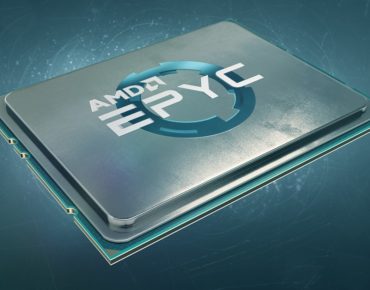AMD Spotlights HPC Processor, GPU Roadmaps

Source:AMD
Advanced Micro Devices continued to play its hot hand at this week’s Computex event in Taipei, Taiwan, highlighting its processor roadmap at the cutting-edge 7-nanometer process node that includes the next generation of its Rome HPC processor for datacenters and Radeon GPUs mostly for high-volume gaming but increasingly for enterprise cloud workloads.
“We’ve really been focused on innovation in high-performance computing,” AMD CEO Lisa Su said in a keynote address on Monday (May 27). Sharpening its focus on datacenters and taking aim at server leader Intel Corp. (NASDAQ: INTC), Su stressed that “one of things about being in semiconductors is you have to make big bets.”
Those bets include a shift to Taiwan Semiconductor Manufacturing Co.’s (NYSE: TSM) 7-nm process technology ahead of datacenter rival Intel. AMD’s latest server CPUs are expected to be launched later this year.
Su claimed more than 60 EPYC-based platforms in production, including Amazon Web Services and Microsoft Azure and Baidu public cloud instances.
Those partnerships build on AMD’s recent win along with Cray to develop a 1.5-exaflops supercomputer for the Energy Department’s Oak Ridge National Laboratory. The exascale machine is based on a future generation of AMD’s EPYC and Radeon “Instinct” processors running on a Cray architecture.
“Our goal in 2021 is to have the world’s fastest supercomputer [based] on AMD technology,” Lu said.
Su also announced a deal with Microsoft to bring its HPC processor capability to the Azure cloud via Microsoft’s HB-series virtual machines tuned to HPC applications. The configuration will run on more than 11,500 EPYC cores.
“HB-series VMs feature the cloud’s first deployment of AMD EPYC 7000-series CPUs explicitly for HPC customers,” Microsoft noted in a blog post. “AMD EPYC features 33 percent more memory bandwidth than any x86 alternative, and even more than leading POWER and Arm server platforms.”
Separately, AMD displayed its second-generation, 7-nm EPYC processor dubbed “Rome,” billed as delivering twice the horsepower and I/O bandwidth per socket when compared to the previous generation along with a four-fold boost in floating-point workloads per socket.
Forrest Norrod, general manager of AMD’s Datacenter and Embedded Systems Group, pitted a two-socket, 64-core Rome processor running a molecular dynamic simulation against the double-socket 28-core Intel Xeon Scalable 8280 “Cascade Lake” processor announced in April. In a head-to-head comparison, AMD claimed Rome more than doubled processor performance.
Norrod said AMD would launch its second-generation Rome processor during the third quarter of 2019.
Meanwhile, AMD continues to build volume for its Radeon GPUs via gaming applications that increasingly run in the cloud. That shift is creating openings for enterprise computing applications based on the chip maker’s NAVI GPUs built on a 7-nm architecture. “We believe it can power a tremendous number of applications” via reduced latency and higher bandwidth, Su said. For example, she said NAVI is the first gaming GPU using the fourth generation of PCI Express.
Investors liked what they heard from Su: AMD shares (NASDAQ: AMD) jumped more than 2 percent after her keynote presentation.
Related
George Leopold has written about science and technology for more than 30 years, focusing on electronics and aerospace technology. He previously served as executive editor of Electronic Engineering Times. Leopold is the author of "Calculated Risk: The Supersonic Life and Times of Gus Grissom" (Purdue University Press, 2016).












